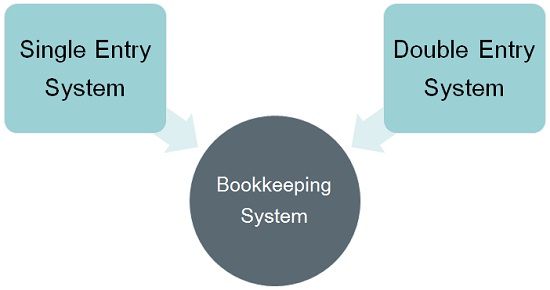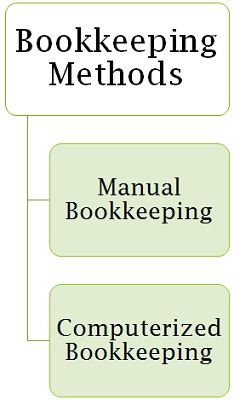Definition: Bookkeeping can be defined as the system of keeping records and classifying all the financial transactions on a day-to-day basis concerning the business operations, in a sequential manner.
The term “transaction” refers to the business activity, in which the exchange of money or money’s worth for goods or services is involved.
It is the initial step to the accounting process, which supplies the preliminary information required to prepare and maintain accounts. Hence, the accounting is based on the proper system of bookkeeping. It involves:
- Gathering basic financial data.
- Identifying the transactions and events with the financial aspect, i.e. only monetary transactions are to be entered in the books of accounts.
- Measuring the transactions in monetary terms.
- Keeping a record of the financial effect of the transactions, in the order in which they arise.
- Classifying the effect of transactions
- Preparing statement, i.e. trial balance.
Objectives of Bookkeeping
The main objectives of bookkeeping are:
- To record the transactions: Bookkeeping is all about keeping a full-fledged record of all the transactions, as and when they take place, in an orderly manner.
- To ascertain financial effect: Bookkeeping tends to reflect the financial effect of all the business transaction occurred in a financial year on the business.
- To show the correct position: If bookkeeping work is adequately performed, it shows the correct position of the business, concerning the income and expenditure, assets and liabilities.
The purpose of bookkeeping is to make sure that the financial transaction is correct, chronological, up-to-date and complete. The main aim of maintaining records is to depict the exact position of the company regarding the incomes and expenses.
Types of Bookkeeping System
There are two types of bookkeeping system:
- Single Entry System: As the name itself signifies, single entry system of bookkeeping involves the recording of only one side of the transaction, as it does not follow any principles or rules. It is mainly used by small businessman, which have minimal transactions.
This system of bookkeeping is considered as incomplete and inaccurate, as it only maintains a record of cash receipts and payments, purchases and sales.
- Double Entry System: This system is based on the duality concept, i.e. every transaction affects two accounts. It means that each debit entry to an account has a corresponding credit entry in another account and vice versa.
This system of bookkeeping is universally adopted and considered as accurate for recording business transactions.
Methods of Bookkeeping
There are two methods of bookkeeping, discussed as under:
- Manual Bookkeeping: It is the conventional method of bookkeeping which involves manually writing the transactions in the books of accounts. It is mainly used by small businessman having minimum transactions, as it is cheaper and easier to maintain.
- Computerized Bookkeeping: With the introduction of computers, nowadays all the bookkeeping work is carried out through computers or laptops. It is an emerging method of keeping a record of financial transactions wherein accounting/bookkeeping software packages are used by the businesses.
This method of bookkeeping is common among business houses, due to convenience and user-friendly interface.
The task of bookkeeping is performed by a bookkeeper, who keeps track of all the financial data and organizes them systematically.
The work is clerical, which is often delegated to junior employees, in the accounts department. The work involves entering the transactions in the daybooks, i.e. purchase book, purchase return book, sales book, sales return book, cashbook, journal, etc., posting the same to the ledger and finally preparing a trial balance.

Key Points says
Nice one…..
Also, visit mine